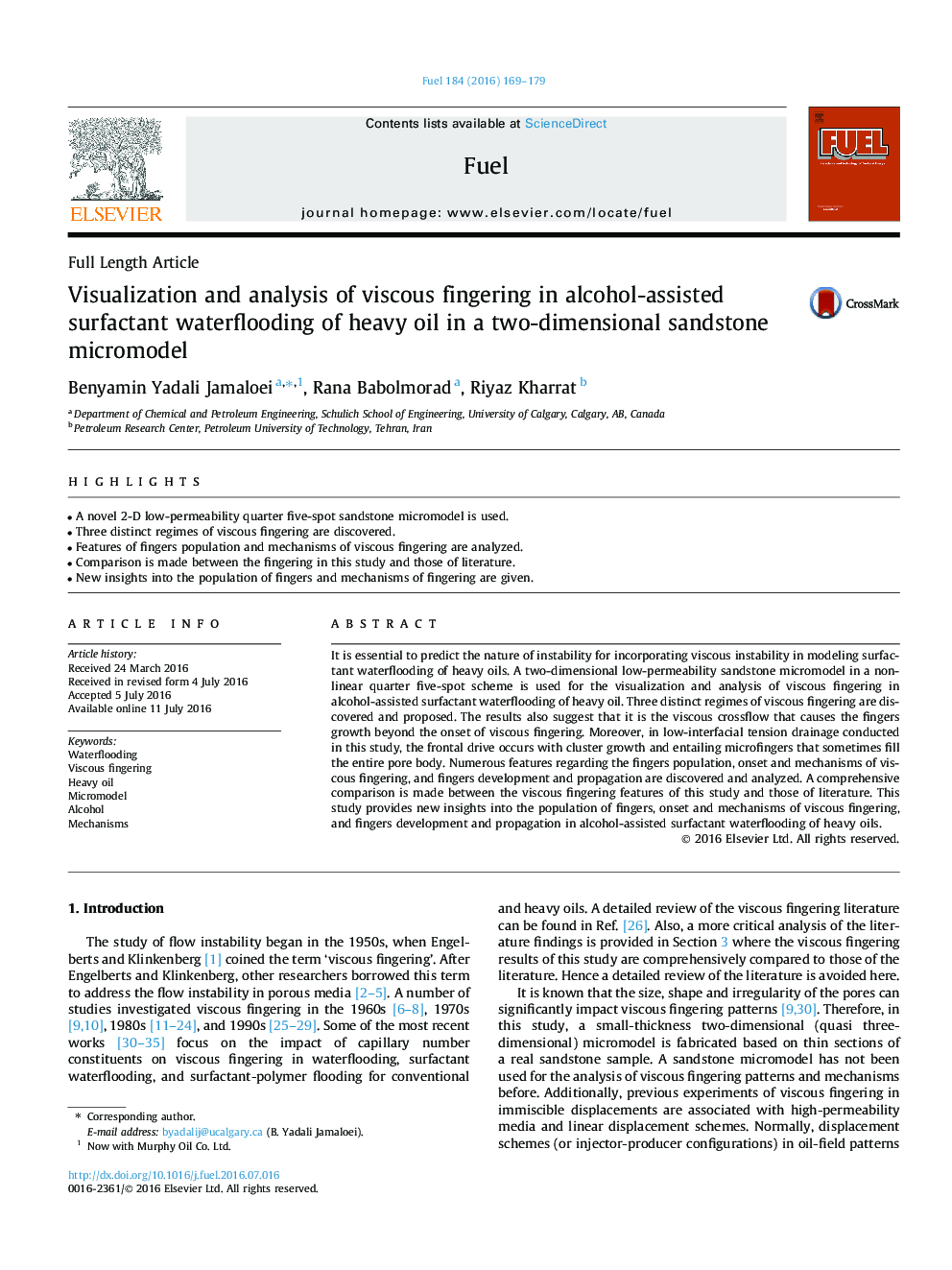| Article ID | Journal | Published Year | Pages | File Type |
|---|---|---|---|---|
| 6632971 | Fuel | 2016 | 11 Pages |
Abstract
It is essential to predict the nature of instability for incorporating viscous instability in modeling surfactant waterflooding of heavy oils. A two-dimensional low-permeability sandstone micromodel in a non-linear quarter five-spot scheme is used for the visualization and analysis of viscous fingering in alcohol-assisted surfactant waterflooding of heavy oil. Three distinct regimes of viscous fingering are discovered and proposed. The results also suggest that it is the viscous crossflow that causes the fingers growth beyond the onset of viscous fingering. Moreover, in low-interfacial tension drainage conducted in this study, the frontal drive occurs with cluster growth and entailing microfingers that sometimes fill the entire pore body. Numerous features regarding the fingers population, onset and mechanisms of viscous fingering, and fingers development and propagation are discovered and analyzed. A comprehensive comparison is made between the viscous fingering features of this study and those of literature. This study provides new insights into the population of fingers, onset and mechanisms of viscous fingering, and fingers development and propagation in alcohol-assisted surfactant waterflooding of heavy oils.
Related Topics
Physical Sciences and Engineering
Chemical Engineering
Chemical Engineering (General)
Authors
Benyamin Yadali Jamaloei, Rana Babolmorad, Riyaz Kharrat,
